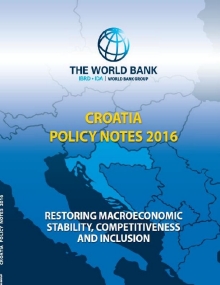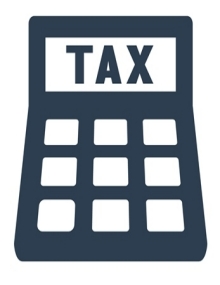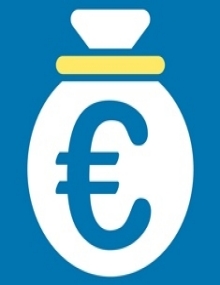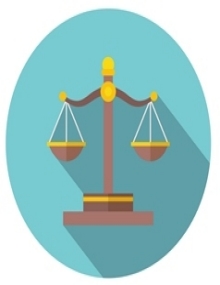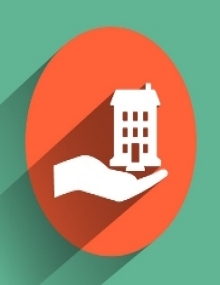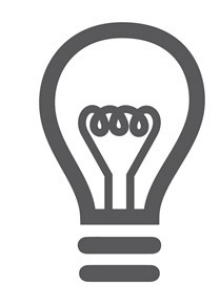Prior to the 2008 global crisis, Croatia achieved major development results, progressing on economic and social fronts. In parallel, the country completed the demanding process of becoming a European Union (EU) member on July 1, 2013. However, the 2008 global crisis revealed the weaknesses of Croatia’s growth model, and triggered a six-year recession, undoing many of the previous economic and social achievements. By 2014, public debt doubled to 85 percent of GDP as did unemployment reaching over 17 percent.
The modest growth prospects, unless complemented with wide ranging reforms, will not be enough to undo the effects of the six-year recession and put Croatia back on the road to sustainable recovery.
To support the Croatian authorities with the reform agenda the report analyzes policy options in four interrelated areas; Restoring Macroeconomic Stability; Fostering Productivity and Competitiveness to Create Jobs; Preparing for Demographic Decline and Aging by Investing in People; and Improving Government, Public Services and Strengthening the Judiciary, which are key to restoring macroeconomic stability, competitiveness and inclusion. The report also provides policy and reform implementation options in areas where the World Bank often has experience in supporting countries with their reform programs. These are described in a series of more in-depth Policy Notes on individual areas.
According to the report, Croatia’s immediate economic challenges include restoring macroeconomic stability, while promoting private sector productivity and competitiveness to create jobs and growth. Restoring macroeconomic stability will help provide a more stable basis for investment, while freeing the private sector from constraints will help promote productive and ease the burden of high rates of unemployment.
Not as immediate but an equally important is Croatia’s projected population decline and aging of the population. Both present significant risks to growth and higher living standards, as well as to fiscal sustainability. Here, the report suggest that the policy response needs to focus on investing in raising skills and promoting healthy aging to prepare Croatians for longer and more productive working lives, while modernizing and rationalizing the social protection and health systems.
There is also a need to continue to upgrade public services, key institutions like the judiciary and the governance of state owned institutions, and infrastructure to better support the needs of people and firms.
Implementation of the kinds of policies and reforms proposed in this report can help the authorities lead the country back to the road of economic and social prosperity.
Overview |
Croatia returned to positive growth in 2015 after more than half a decade of recession, but the structural weaknesses exposed by the financial crisis have yet to be fully addressed. Since 2008, Croatia has witnessed six years of recession, with GDP declining by 13% and unemployment doubling to over 17%, with youth unemployment reaching 50%, and poverty rates rising.Croatia’s immediate economic challenges include restoring macroeconomic stability, while promoting private sector productivity and competitiveness to create jobs and growth. Restoring macroeconomic stability will help provide a more stable basis for investment, while freeing the private sector from constraints will help promote productive and ease the burden of high rates of unemployment. |
|---|
Restoring Macroeconomic Stability |
Croatia has achieved major development results over the last two decades. Between 1995 and 2008, per capita national income more than doubled to $13,960 - making Croatia a high-income country. During this period Croatia has been fast converging with EU levels, with average real growth amounting to 4.2% - 2 percentage points higher than in the EU27. The at-risk-of-poverty rate fell to 19 percent in 2007, while the country's 0.31 income inequality (measured by the Gini coefficient) makes Croatia a country with moderate inequalities. Public debt and fiscal deficit remained low, while inflation declined to low single digit. Important institutional reforms, such as reform of judiciary, regulatory framework, competition policies, supported the transition toward membership of the European Union. These achievements created a sense of optimism about Croatia’s future and the promise of further shared prosperity within the world’s richest economic block. |
|---|
Fostering Growth and Competitiveness to Create Jobs |
Croatia is in a transition phase, specializing in existing markets but showing little growth in new products and markets. The contribution of old products in old markets to export growth is higher than the contribution of old products in new markets, new products in old markets, and, vitally, new products in new markets. Croatia’s business environment remains a priority area for reform. In order to foster such development, it is key to tackle factors holding back entrepreneurship in Croatia, including an unfriendly business environment, limited competition in product markets, lack of early stage financing and skills deficits. |
|---|
